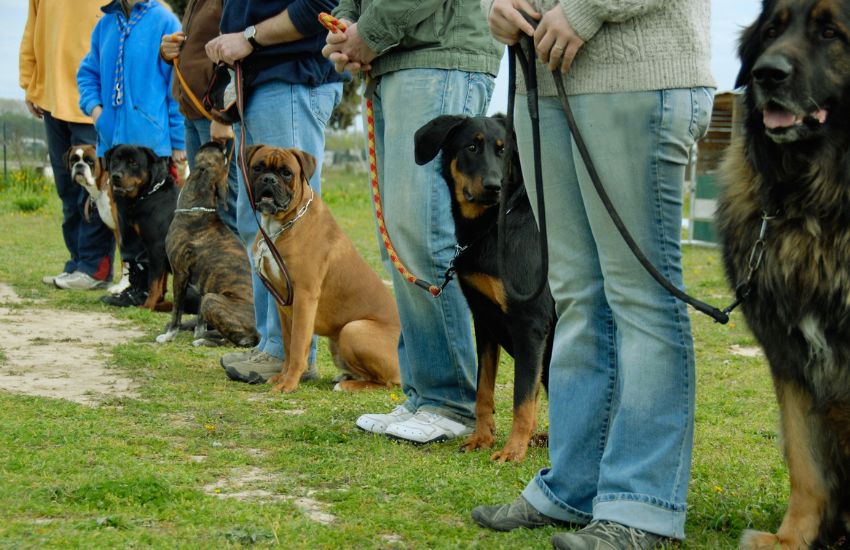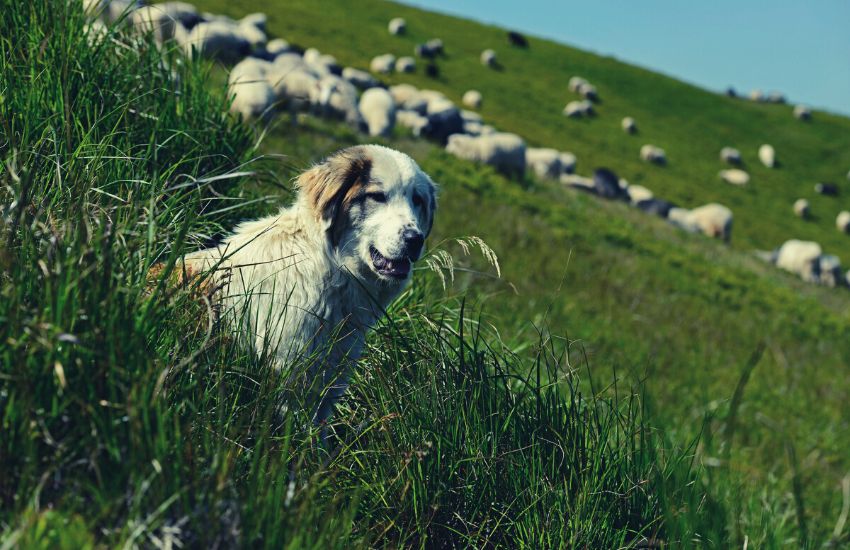shelter pets in need
Each order helps pets in need

Ever wonder how your furry friend came to be by your side? Dogs haven't always been man's best friend. Their wild ancestors, wolves, roamed the wilderness thousands of years ago. But at some point, wolves started hanging around humans, slowly evolving into the first dogs. Talk about a glow-up!
Over generations of breeding, humans domesticated and shaped dogs into the diverse breeds we know and love today. It's incredible to think how far our furry friends have come since their days in the wild. From wolf to woof, dogs won over humans and secured their place by our side.
Read on if you're curious about the once unlikely partnership between wolves and humans and how this relationship has left a lasting mark on human history.
The domestication of wolves and dogs by humans took place so many thousands of years ago that the exact location of the first domestic wolf or dog has always been in doubt. Some genetic studies say it was Europe; other archaeologists say it's the Middle East, and others say East Asia. The DNA from one ancient Irish dog may just have helped solve this mystery.
Scientists found the bones of a 4,800-year-old dog at an ancient stone monument in Ireland called Newgrange. Enough DNA was extracted to sequence this dog's genome. When compared to the DNA of hundreds of modern dogs, researchers found what could be called a deep fork in the trunk of the canine family tree.
One branch contains the dogs of Asia (like the Shar Pei and Tibetan Mastiff). The other has western Eurasian breeds, including the Newgrange dog. But the DNA tells two interesting stories.

Scientists found evidence that one lineage of Asian dog did break off from the main line and migrate west between 6,000 and 14,000 years ago.
But here's the surprise: the oldest dog fossils in both geographic areas are older than that, so it's likely that when this branch of Asian dog made its way west, there were domesticated pooches already there.
The Asian dogs that migrated west interbred with the Western dogs already there. The line of dogs that remained in Asia is more genetically distinct and less interbred. The original ancient western dogs went extinct, and experts say that only around 10% of their DNA exists in modern dogs.
If this theory proves correct, dogs would join pigs in the small group of animals domesticated twice in separate places. Many experts agree that Asian dog breeds have the most ancient DNA, and quite a few still argue that East Asia is the one place of origin for domestic dogs.
But there are others who advocate for the Eurasian origin theory, and now this dual-origin story is gaining ground.
The bottom line? A definitive answer has not yet been discovered. Scientists are confident that more ancient fossil and DNA evidence will eventually tell us where and when dogs were first domesticated.
Today's breeds show the legacy of this complex history. While breeds are recent creations, dogs display a vast range of sizes, shapes, colors, and skills descended from their ancient ancestors.
The domestication of wolves was a mutual partnership: humans provided food and shelter; dogs provided companionship, helped with hunting, and warned of danger. This interdependence and long history is why dogs are so attuned to human cues and remain by our side today.

The partnership between humans and wolves goes back thousands of years. There's even archeological evidence showing dogs were domesticated in different parts of the world at different times—the earliest known of which dates to around 15,000 years ago in Europe and Asia.
It's very likely that these dogs descended from regional wolf populations. Interbreeding between dogs and wolves was common, resulting in a mix of characteristics that were useful to humans.
Dog breeds as we know them today developed much more recently, within the last 500 years or so. Early dogs had an eclectic mix of traits that suited the needs of hunter-gatherer groups in different environments. When humans began settling in agricultural communities, certain features were selectively bred.
The relationship between humans and dogs has endured for millennia because it benefits both species. Dogs provide companionship, help with work, and security. In turn, humans provide dogs with food, shelter, healthcare, and affection. This interdependence has created a unique bond between humans and dogs in the animal kingdom.
By the Neolithic era, dogs had become far more than working animals to many humans. As evidenced by discoveries of pet dogs buried with owners, some dogs were awarded a status like "personhood" and given ceremonial burials similar to humans.
At some point, dogs transitioned from tools for hunting and security to beloved family members. Their remains have been found lovingly buried alongside humans, sometimes with grave goods, suggesting they were seen as equals in the afterlife. The close bonds between dogs and their humans are evident in these poignant burials.
For early humans, the companionship of dogs likely filled an emotional need and brought joy and comfort. Dogs that lived and worked alongside families for years were surely seen more as friends or children than as beasts of burden. The desire to memorialize a faithful companion shows how deeply dogs were valued and the grief that was felt at their loss.
While the partnership between dogs and humans was first one of practicality, it ultimately became one of deep affection and kinship. The remains of dogs treated with reverence give us a glimpse into the profound relationships our ancestors were capable of forming with animals and the compassion they felt for their faithful four-legged friends.

As humans developed agriculture and permanent settlements, our canine companions diversified with us. Modern breeds trace back to this period when dogs were bred for specific purposes.
Some of the earliest breeds were herding and hunting dogs. Collies descended from dogs that helped shepherds in Scotland. Hounds like Bloodhounds were prized for their sense of smell, assisting hunters in tracking prey.
Sighthounds, including Greyhounds, were bred for speed, chasing down fast prey in open areas. Gundogs, like Retrievers, were bred to flush out game and retrieve it after it had been shot. Guard dogs such as Mastiffs protected homes and livestock.
As civilizations advanced, smaller companion dogs became popular among nobility and royalty. Dogs like Maltese, Pekingese, and pugs were bred as pampered pets. They were seen as a symbol of status and wealth.
Starting in the 19th century, kennel clubs established standards for recognizing and registering new breeds. Breeders selected dogs with the desired traits and bred them together, eventually developing separate breeds. Many of today's dogs trace back to this era (e.g ., German Shepherds, Bulldogs, and Dachshunds).
Though breeds today vary wildly, from teacup poodles to mastiffs, their origins trace back to dogs domesticated in different parts of the ancient world. Our furry friends have been by our side for thousands of years, no matter where we've roamed. Their long history is as rich as our own.
Through thousands of years of partnership, pooches and humans have influenced each other's evolution. Our canine friends have diversified into a wide range of shapes, sizes, colors, and talents — yet they remain our faithful companions, as they have been since the earliest days of their domestication.
Check out our huge collection of dog merch! A fourth of all proceeds are donated to no-kill animal shelters.
Yes, dogs were the first animals to be domesticated by humans. Dogs and humans have had a special bond for thousands of years.
Dogs descended from wolves and were originally domesticated in Europe and Asia between 15,000 to 40,000 years ago. Scientists believe that there were two separate domestication events: one in Eastern Eurasia and one in Western Eurasia. The dogs from Eastern Eurasia migrated to Europe, blending with the native dogs. These dogs are the ancestors of most modern dogs today.
Archaeological studies suggest that humans domesticated canines for companionship and to assist with tasks like hunting, guarding, and herding. Dogs provided early humans with security, helped hunt prey, and aided in daily chores. In return, dogs received food, shelter, and companionship. This mutually beneficial relationship allowed canines and humans to thrive together.
Leave a comment